
Inside a modern Mediterranean-inspired home that is the perfect antidote to hectic Hong Kong life
- Evocative of their trips abroad, a couple’s rustic-chic home in the city’s New Territories offers peace and tranquillity in an unexpected urban haven
- Both prefer an unpolished, weathered look to shiny slickness
“Speed is essential in war.”
That edict, by Sun Tzu, sets the tone for business at the Sha Tin trading company managed by Andy and Karen Kwan. The plaque bearing the sixth-century-BC Chinese general’s Art of War stratagem, however, did not faze the couple’s interior designer, Keith Chan Shing-hin, who often met his busy clients at their office (coincidentally next to his studio) to discuss plans for their new Tai Po home.
“Every evening I would see their car still in the garage when I was going home,” says Chan, founder of Hintegro. “I’m a designer so I work a lot, but they do longer hours than me.”
These days, however, the Kwans’ newly renovated, 2,100 sq ft, three-storey house helps them to enjoy life outside work. Few reminders of activity more strenuous than choosing a bottle of wine can be found in the two-bedroom dwelling, which recalls exotic locations: from the fern-fringed pond at the entrance, to rustic stone walls, intricate blue-and-white tiles and palm trees swaying beside a swimming pool, this is a joyful dwelling that recalls holidays at every turn.
Favourite trips abroad inspired many of the features the couple wanted around them.
“Andy likes the atmosphere of Morocco and southern Italy, and small details from Spain, Portugal [and Japan],” Chan says, recalling the photos his clients would ping him while away: the ancient cave town of Matera, in Italy’s Basilicata, inspired three feature walls; and a hotel in Hokkaido was behind the design of the bar, a lovely spot to perch while unwinding to the sounds of running water and birdsong.
“Andy sent me photos of a big table, by a fireplace, where everyone was drinking red wine, and said, ‘I want this,’” which led to the crazy-pavement-type benchtop Chan ended up designing for the bar. Despite the tiles creating an uneven surface – potentially hazardous for glassware – the couple were undeterred. Both prefer an unpolished, weathered look to shiny slickness.
“I don’t like things too perfect; too artificial,” confirms Karen Kwan, a calm, unhurried counterbalance to her husband (who makes a getaway after a quick greeting). Adds Chan: “They wanted rough materials, but perfectly rendered.”
Interestingly, that meant, in certain places, “cheating”. The rough-hewn living room wall, for example, is a mixture of crushed stone and fibreglass made to look like the real McCoy. The couple so liked the look that they also used the product, by German brand Stones Like Stones, in a small bathroom, and in the main bedroom. This private area is accessed via stairs – prettily tiled on the risers – linking it to the dressing area one level below. The suite, with attached bathroom, includes a balcony with walls embedded with the odd Portuguese tile. Wooden beams overhead – again simply for effect – add to the cosiness.
The feeling is enhanced by balcony walls a fraction taller than they had been, a simple fix that allows the Kwans to relax, in private, and enjoy edited views of verdant hills.
I ordered a lot of copper items from old coppersmiths in Yau Ma Tei. They had been making things for Chinese restaurants for decades
On the middle floor, greenery also forms the backdrop to a bright, airy gym, equipped with a punch bag and monkey bars. The other room on this level is a study, furnished with a custom-made concrete desk with copper-clad legs, a material dotted around the house.
“I ordered a lot of copper items from old coppersmiths in Yau Ma Tei,” says Chan, referring also to a basin and cupboard handles made by three brothers, who were thrilled to be approached by a young designer. “They had been making things for Chinese restaurants for decades.”
Another material used in the house was old ship wood, sourced from the mainland and used to make a faux lintel and a television console in the living room.
From that prime spot with views of the pool and trees, it is easy to understand why Andy was so taken by the Islamic notion of gardens as paradise on Earth. It is also clear how 10 per cent of the renovation budget could have been spent on the landscaping.
Seated at a teak dining table, with shelves full of holiday mementos behind, Karen reflects on their lives and says: “My husband does things quickly: he eats fast, walks fast; everything is fast.”
“He was also quick at making decisions,” Chan recalls, adding, however: “The last time I visited, Andy said that when the weather is good, he will drive home and sit by the pond just to look at the sky. Sometimes he doesn’t even go inside.”
Karen explains: “He likes to look at the stars and the fish, and think.”
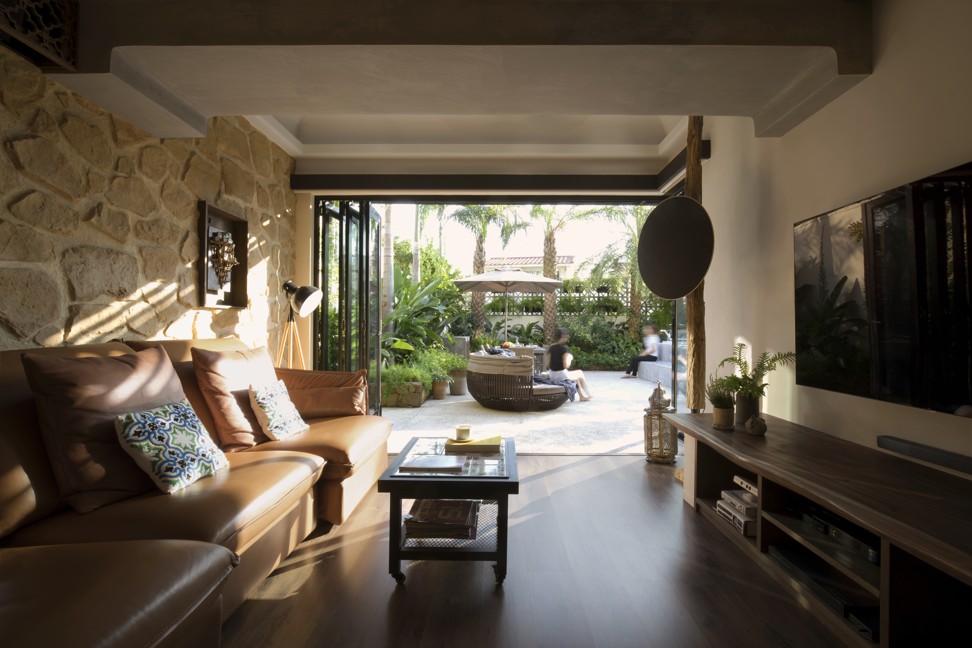

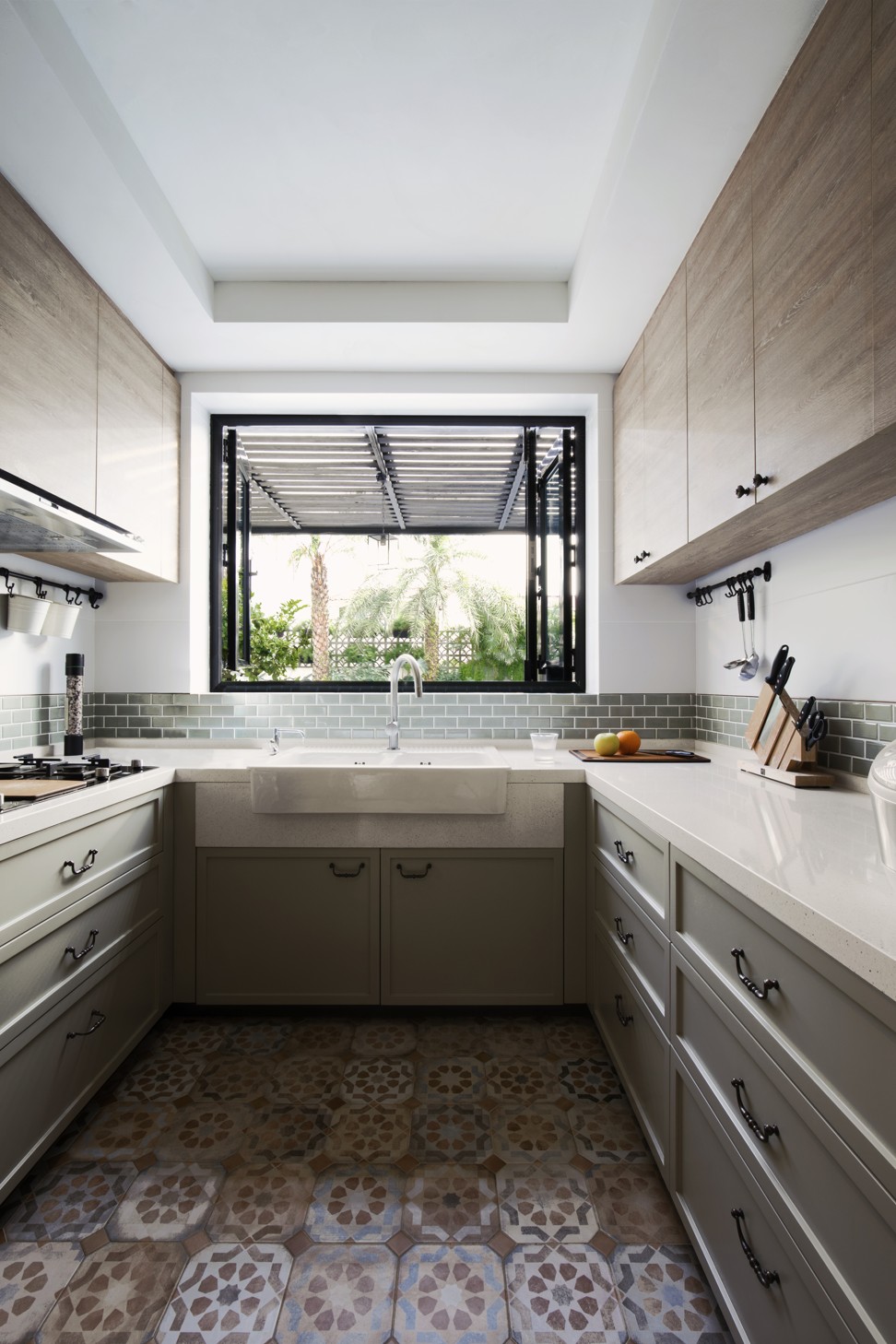

Gym This no-fuss workout room includes monkey bars (HK$4,500) designed and built by Hintegro. The flooring (about HK$7,000 for the room) came from A&T Sport Goods (17/F, 54 Hoi Yuen Road, Kwun Tong, tel: 3628 2787). The punch bag and poster were from the clients’ previous home.
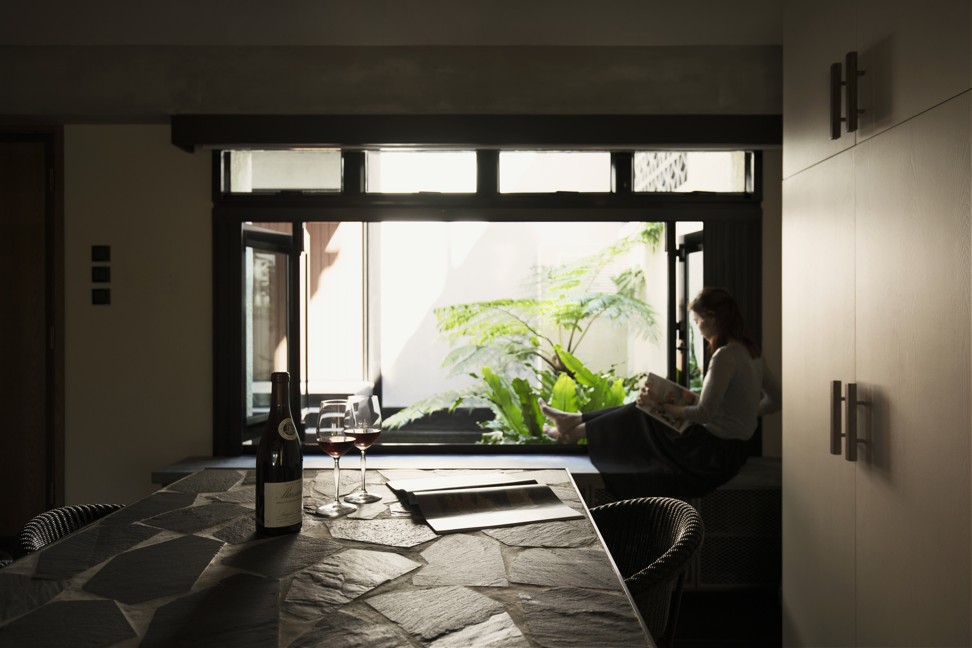
Bar area The bar area and window perch make the most of the pond, fringed with ferns. The bar, designed and built by Hintegro for HK$25,000, features a concrete base with tiles on top. The chairs were HK$2,950 each from Tree.
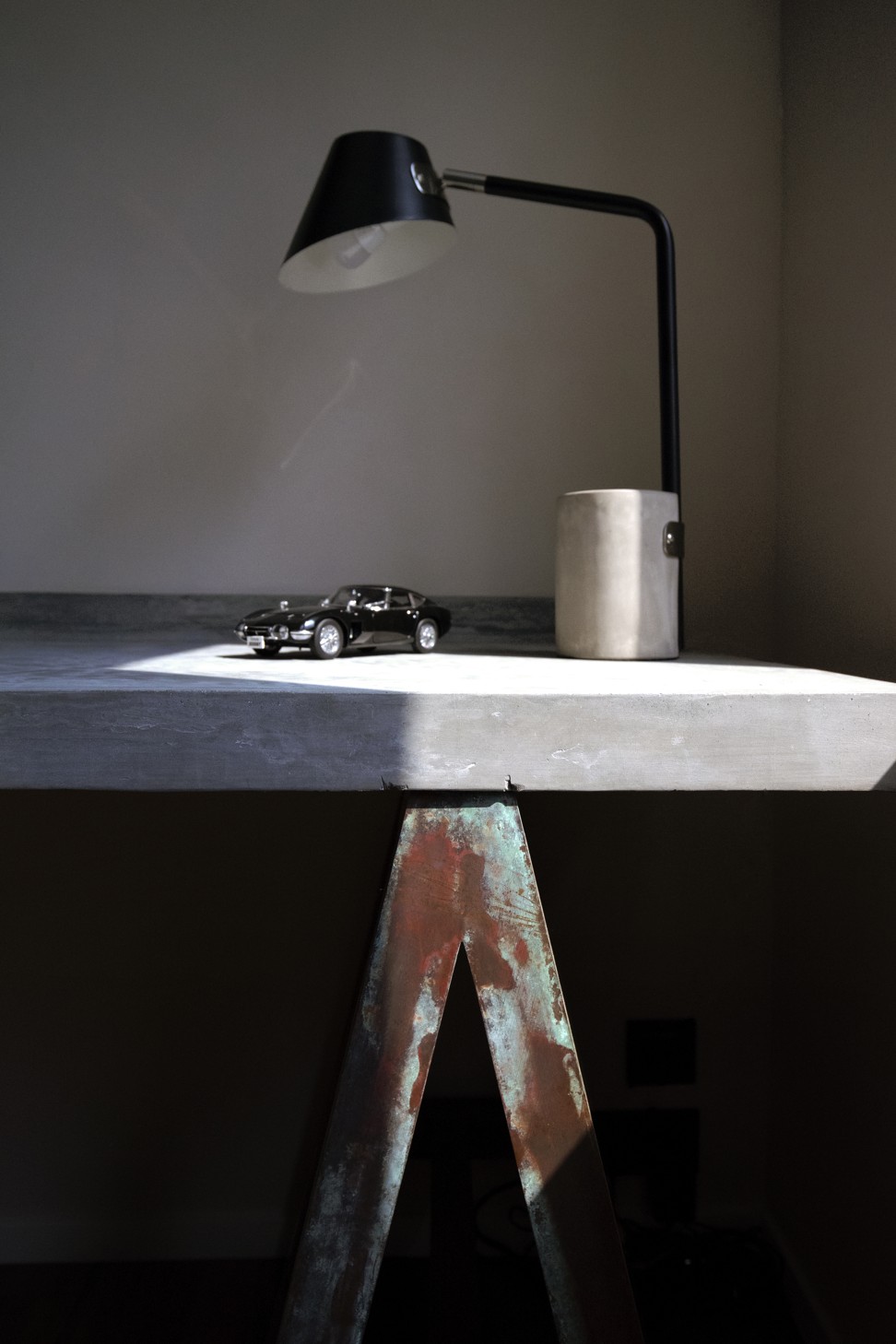
Study The concrete desk (HK$35,000) was designed and built by Hintegro. The Frandsen concrete table lamp (HK$1,800) came from TP Lighting.
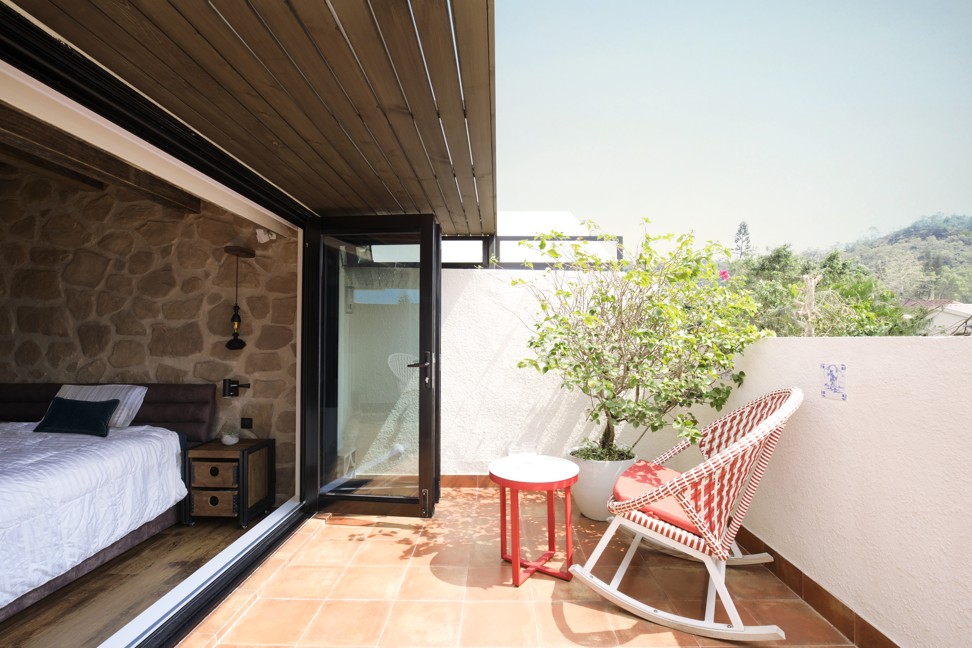


En-suite bathroom The patterned tiles came from Hop Hing Lung and cost HK$7,000 in total. The door, with textured glass, was custom made by Hintegro and, with the door frame, cost HK$6,000. The Markslöjd Sweden pendant (HK$850) came from TP Lighting. The copper cupboard handles (HK$800 each), designed by Hintegro, were made by Bing Kee Copper Ware (1 Hamilton Street, Yau Ma Tei, tel: 2384 4838).
Tried + tested
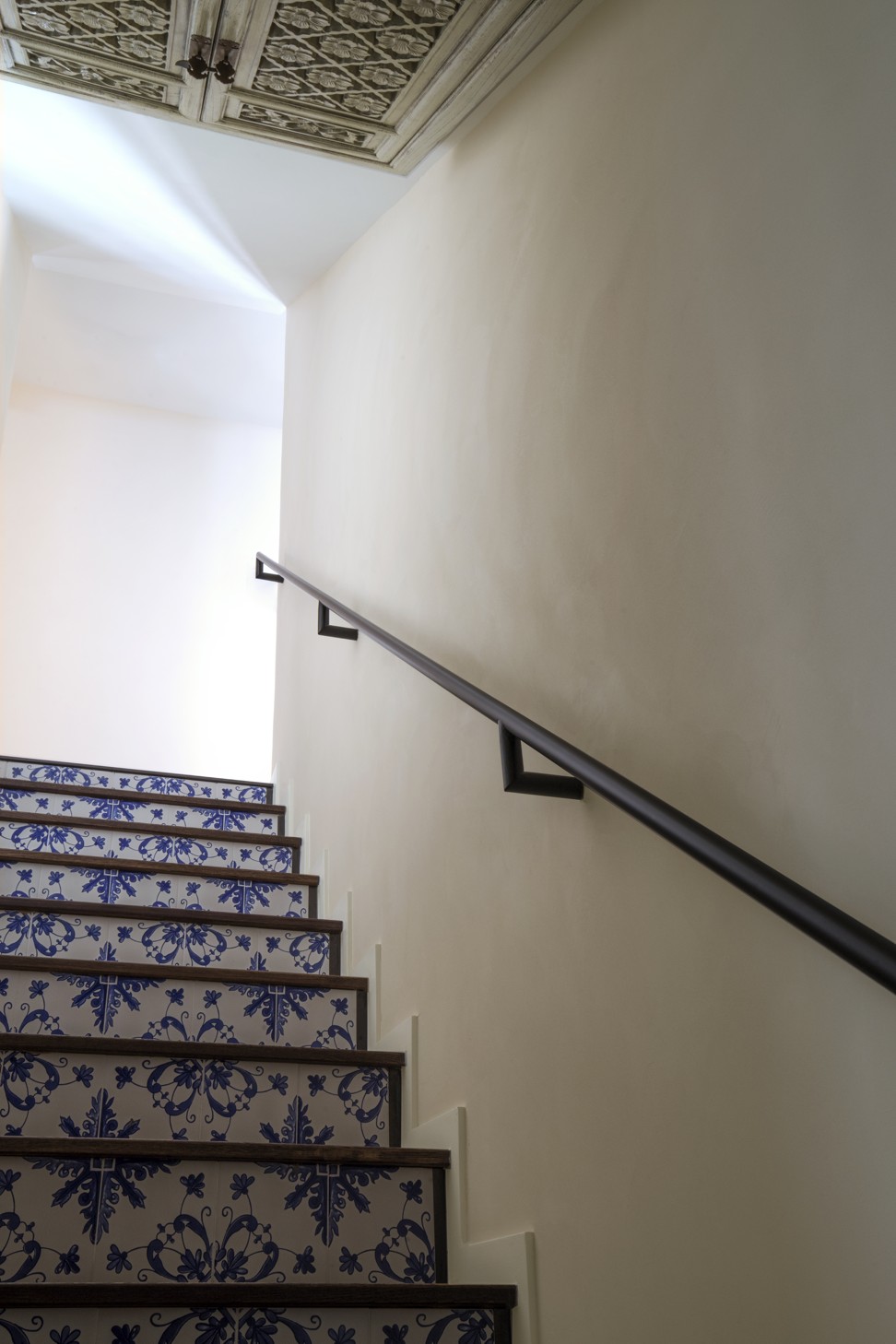
Mirror work The Kwans balked at installing a regular mirror in the stairwell, as their feng shui consultant had recommended, so came up with a solution on their own: an intricate, wooden window-frame mirror, which they bought years ago in Sai Kung, now hangs over the oak steps, which feature Portuguese tiles on the risers. The tiles (HK$45 each) came from Simex International Trading.

